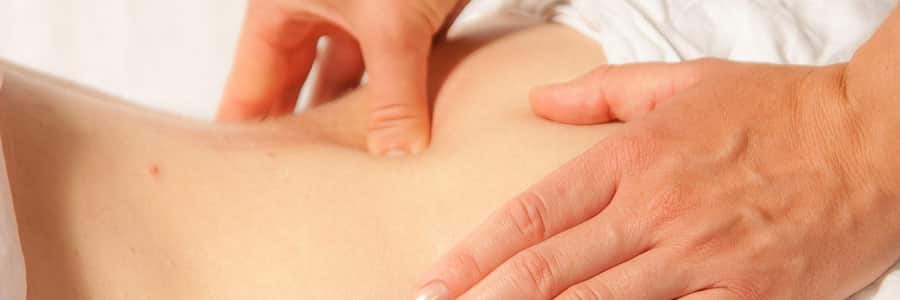
Lumbar disc herniation
A lumbar disc herniation may be called a lumbar disc protrusion, lumbar disc extrusion, lumbar disc prolapse, lumbar disc rupture, a slipped low back disc or a low back disc bulge. Technically call these things just fall under the umbrella of disc herniation, except for disc bulge. Put simply, a disc herniation occurs when the material from the centre of the disc (nucleus pulposus) escapes through tears in the outer part of the disc and then pokes out or makes the outer fibres bulge out to some degree.
This next part is important. Lumbar disc herniation in themselves are not painful. That is, we can have asymptomatic low back disc herniation. However the little tears that allow for a disc herniation are painful and these are called annular tears. The other thing that makes a disc herniation painful is if it pokes out and protrudes into some nervous tissue such as the spine or the spinal nerve roots. This can give us back pain or pain all the way down the buttock, legs and into the feet. This is typically called sciatica (lumbar radiculopathy).
The following are a little summary of the types of lumbar disc herniation:
- Lumbar disc protrusion: A small herniation
- Lumbar disc extrusion: A large herniation
- Lumbar disc sequestration: A disc extrusion that breaks off and seeps into the spinal canal (epidural space)
Symptoms of lumbar disc herniation
The most common symptom of lumbar disc herniation is typically low back pain. Tears in the disc are painful and then the physical compression of the disc material on the nerve root causes an inflammatory process (radiculitis) and further pain is experienced. Pain can be on one side or both sides of the low back. Pain may refer from the low back, to the buttocks, down the back of the leg and calf into the toes. Numbness and tingling are common and muscle weakness may result as the condition progresses.
Treatment of lumbar disc herniation
At Sydney Spine & Sports Centre (S3C) we offer treatments for lumbar disc herniation. We use a variety of techniques that are selected for use based on the degree of the lumbar disc herniation. Mechanical treatments aimed at reducing pain and improving function combined with low back strengthening exercises is a focus. Our chiropractors use gentle treatments that are supported by the latest research to ensure the gold standard in lumbar disc herniation treatment is achieved.
Causes of low back pain
The following conditions are common causes of low back pain.
- Lumbar myelopathy
- Cauda equina syndrome
- Lumbar spinal stenosis
- Bone Spurs
- Degenerative disc disease (DDD)
- Pinched nerve
- Lumbar radiculopathy
- Lumbar facet joint pain
- Bulging Disc
- Herniated Disc
- Disc protrusion
- Discogenic pain
- Post laminectomy syndrome
- Coccydynia
- Spondylolisthesis
- Spondyloarthropathy
- Ankylosing spondylitis
- Reiter’s syndrome
- Psoriatic arthritis
- Enteropathic arthritis
- Sacroiliac disorders
- Foot drop
- Spinal neurofibroma
- Acute low pain
- Chronic low back pain
- Stiff low back
- Trigger points in the low back
- Red flags for low back pain
- Internal disc disruption
- Lumbar spondylosis
- Lumbar facet syndrome
- Lumbar foraminal stenosis
- Lumbar disc herniation
- Lumbar osteoarthritis
- Lumbar osteophytes








